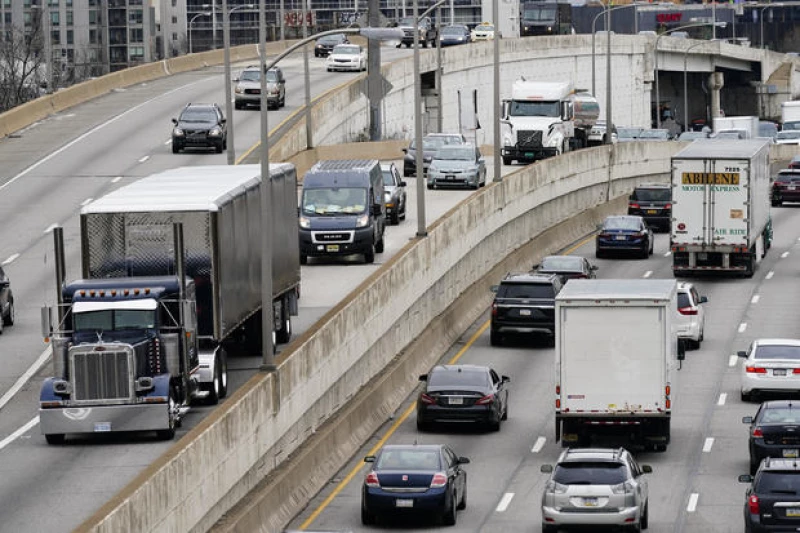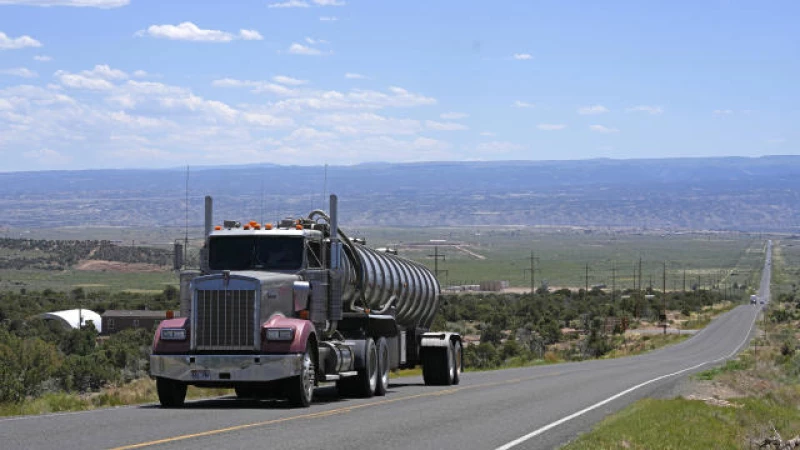Washington— The Environmental Protection Agency announced on Friday the implementation of stringent emissions standards for heavy-duty trucks, buses, and other large vehicles. This move is expected to aid in reducing greenhouse gas emissions from some of the nation's largest sources.
The new regulations will be applicable for model years 2027 through 2032. It is projected that these rules will prevent up to 1 billion tons of greenhouse gas emissions over the next thirty years and yield approximately $13 billion in net benefits. These benefits will manifest in the form of reduced hospital visits, fewer lost workdays, and a decrease in fatalities, as stated by the EPA. The new standards are anticipated to have a significant positive impact on an estimated 72 million individuals in the United States residing near freight routes frequently used by trucks and other heavy vehicles. These communities often bear a disproportionate share of harmful air pollution, the agency added.
"Heavy-duty vehicles play a crucial role in the transportation of goods and services across our nation, sustaining our economy. However, they also represent a substantial source of pollution within the transportation sector — emissions that contribute to climate change and result in poor air quality in numerous American communities," remarked EPA Administrator Michael Regan.
"By reducing emissions from our heavy-duty vehicles, we are not only promoting cleaner air and less pollution but also creating safer and more vibrant communities. This initiative will result in lower fuel and maintenance costs for truck owners and operators, and most importantly, it will lead to healthier Americans," stated Regan.
Following the recent announcement of new automobile emissions standards for passenger vehicles, the EPA has introduced new regulations for heavy trucks and buses. While these rules relax the initial tailpipe limits proposed last year, they aim to align closely with the stringent standards set for model year 2032.
The EPA mentioned that the auto industry could comply with these limits if 56% of new passenger vehicle sales are electric by 2032, in addition to at least 13% plug-in hybrids or other partially electric cars.
The details of the new emissions rules
The regulations for trucks are more intricate, with a variety of electric-vehicle or other non-traditional sales projections based on the type of vehicle and its use. The EPA specified that by 2032, 30% of "heavy-heavy-duty vocational" trucks should be zero-emission, while 40% of short-haul "day cabs" must be zero-emission vehicles.
These new rules for cars and trucks arrive at a time when the sales of Electric Vehicles (EVs), crucial for meeting the standards, have started to decline. The auto industry raised concerns about the EPA's initial standards proposed last April for passenger vehicles, highlighting slower sales growth as a key factor. These standards are a vital component of President Biden's ambitious plan to reduce emissions that contribute to climate change.
"Our Clean Trucks plan aligns with President Biden's historic investments in America and fulfills this administration's pledge to address climate change and promote environmental justice," Regan stated.
This new regulation will offer more stability for the sector, while also bolstering U.S. manufacturing jobs in advanced vehicle technologies, Regan explained. He mentioned that in the next ten years, these standards "will position the U.S. heavy-duty industry for continuous expansion."
However, industry organizations strongly opposed the new standards. They criticized the regulations as unattainable with current electric vehicle technology and raised concerns about the insufficient number of EV charging stations and limitations in power grid capacity.
The American Trucking Associations and the Owner-Operator Independent Drivers Association, representing significant portions of the industry, warned of potential disruptions in the supply chain. They also suggested that smaller independent companies might opt to retain older diesel trucks that emit higher levels of pollution, contradicting the EPA's objectives.
The updated regulations reduce the required sales rates for zero-emission vehicles in the 2027-2029 model years but increase them in later years, effectively mandating the use of electric and hydrogen-powered trucks, according to the trucking associations. The group argued that the EPA's rule restricts options for trucks and buses to untested technologies.
"The targets set for post-2030 are completely unattainable," declared Chris Spear, CEO of the trucking group. "Any regulation that does not take into consideration the practical realities of trucking will only lead to failure for the industry and America's supply chain."
Todd Spencer, president of the independent drivers association, representing small trucking companies, criticized the Democratic administration, stating that they are determined to regulate local small businesses out of existence with their unfeasible environmental mandates.
The American Petroleum Institute, the leading lobbying group for the oil and gas industry, along with the American Fuel & Petrochemical Manufacturers, expressed that the new rule is part of the Biden administration's comprehensive effort to limit choices for American consumers, businesses, and industries.
The rule heavily promotes zero-emission vehicles while discouraging the advancement of other fuel-based technologies, such as American-made renewable diesel, which are currently effective in reducing emissions in heavy-duty fleets," the groups emphasized.
They are advocating for Congress to overturn the rule and are ready to challenge it in court if necessary.
Regan mentioned that the EPA designed the limits to offer truck owners a variety of powertrain options, including advanced combustion vehicles, hybrids, and electric and hydrogen fuel cells.

The EPA projected that the implementation of new regulations would result in a total savings of $3.5 billion for truck operators between 2027 and 2032, allowing the vehicles to pay for themselves within two to four years. Additionally, the 2022 Inflation Reduction Act includes tax credits that help offset the purchase cost of new electric vehicles, as highlighted by Regan.
The updated emissions standards are expected to have immediate positive impacts on public health, particularly in areas heavily affected by truck emissions, according to Harold Wimmer, CEO of the American Lung Association.
"Transportation stands as the primary source of pollution driving climate change," Wimmer stated. "These stringent standards aimed at promoting a zero-emission future for trucks, buses, and other heavy-duty vehicles play a crucial role in addressing this issue."
Margo Oge, a former director at the EPA's Office of Transportation and Air Quality, emphasized that while medium and heavy diesel trucks account for less than 6% of vehicles on the road, they contribute to over half of the pollution Americans are exposed to, as well as global warming. Oge praised the EPA's standards as a significant step forward in combating climate change and improving air quality.







